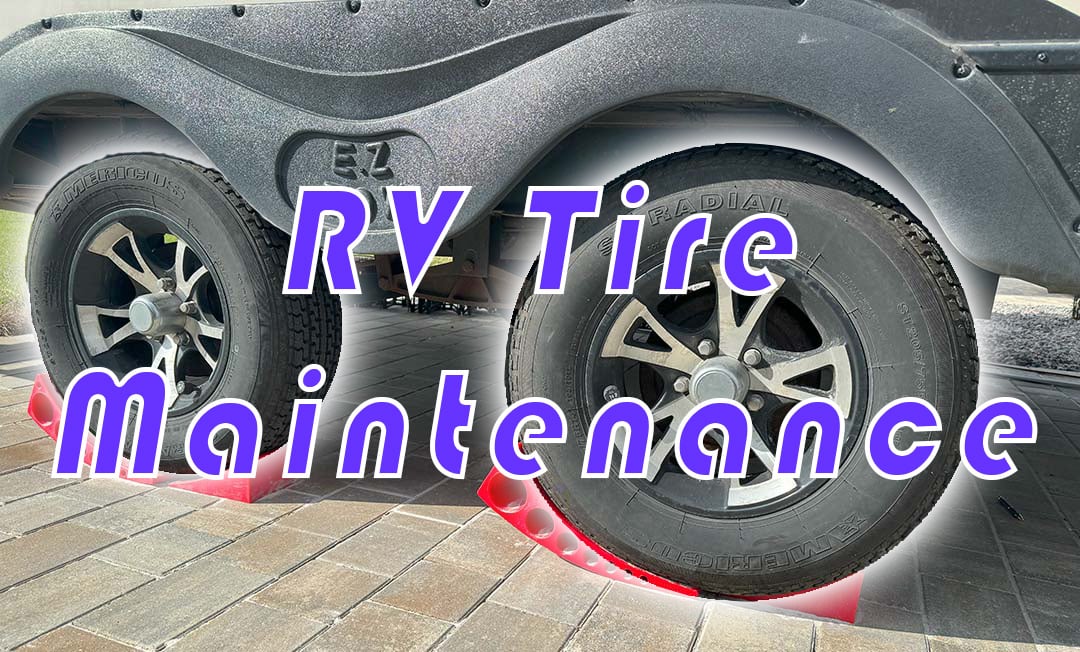Proper RV tire maintenance is paramount for ensuring safety on the road. Neglecting RV tire maintenance can lead to hazardous situations, including blowouts or loss of control while driving. By implementing regular tire inspections, pressure checks, and tread evaluations, RV owners can significantly reduce the risk of accidents and enjoy a safe and worry-free journey.
Proper Tire Inflation
Importance of maintaining correct tire pressure
Maintaining the correct tire pressure on an RV is paramount for several reasons, with one of the most critical factors being the impact on treadwear. Proper tire pressure ensures that the load on each tire is distributed evenly, preventing uneven wear and tear. This extends the tires’ lifespan and contributes to overall safety and performance on the road.
RV manufacturers meticulously determine and recommend specific tire pressures for each tire on a particular axle, considering the vehicle’s weight distribution and load-bearing capacity. Deviating from these recommended pressures can lead to uneven treadwear, compromising the tire’s structural integrity and increasing the risk of blowouts or other tire-related issues. Regularly monitoring and maintaining the correct tire pressure is a simple yet effective measure that RV owners can take to ensure a smoother, safer, and more economical travel experience.
Recommended inflation pressure for different RV tires
The recommended inflation pressure for RV tires varies depending on the type and class of the vehicle, emphasizing the critical need for owners to consult their RV manufacturer’s guidelines for precise tire pressure specifications. For instance, Class A motorhomes, being larger and heavier, may have recommended tire pressures ranging from 80 to 110 psi, ensuring optimal load distribution and safety. Class B and Class C RVs might have lower recommended pressures, typically between 50 and 80 psi, reflecting their lighter weight and different chassis designs. Bumper pull trailers, pop-ups, and 5th Wheels will also have distinct pressure requirements tailored to their unique load distributions.
The importance of referencing the RV manufacturer-specific tire pressure cannot be overstated, as it accounts for vehicle weight, axle configuration, and towing specifications. Adhering to these guidelines is essential for promoting tire longevity, ensuring proper road handling, and ultimately enhancing the overall safety and performance of the RV.
Use the correct tire inflators
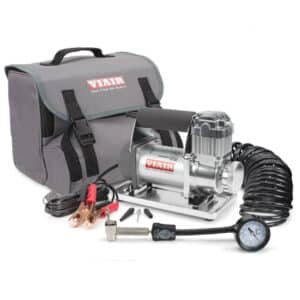
RV owners must refer to the manufacturer’s tire pressure specifications for their particular model. This ensures the tire inflator can achieve the recommended pressures and aligns with the vehicle’s weight, load distribution, and towing specifications. Choosing the proper tire inflator tailored to the RV’s requirements is a proactive step in maintaining optimal tire health and road safety.
Monitoring Tread Wear
Understanding tread depth and its impact on tire performance
Understanding tread depth is fundamental to comprehending tire performance and safety on the road. Tread depth refers to the vertical measurement from the top of the tire tread to the bottom of the tire’s deepest grooves. It is pivotal in providing traction, especially in adverse weather conditions. As tires wear over time, the tread depth decreases, and monitoring this depth is crucial for vehicle safety. A tire’s ability to grip the road, displace water, and maintain stability is directly tied to its tread depth. Measuring tread depth can be done using a simple tread depth gauge or even with the help of a coin.
Adequate tread depth ensures efficient water evacuation, reducing the risk of hydroplaning. It also enhances overall handling and braking performance. Regularly checking and maintaining proper tread depth is essential for road safety and an excellent indicator of tire health. The accompanying image illustrates how to measure tread depth using an everyday object. It provides a visual guide for RV owners to assess their tires and make informed RV tire maintenance and replacement decisions.
How to check tire treadwear and when to replace tires
Using a penny to check the tread depth on an RV tire is a simple and quick method that can provide a primary indication of tire wear. Take a penny and insert it into the tread groove with Lincoln’s head facing downward. If you can see the top of Lincoln’s head, it indicates that the tread depth is too shallow, and the tire may need replacement. However, while this penny test is a handy DIY measure, it’s important to note that it doesn’t provide precise measurements and is not a substitute for a thorough inspection by a qualified technician.
A qualified professional has the expertise and tools to assess the tire’s overall condition, identify irregular wear patterns, and determine if the tire meets safety standards. Regular inspections by a qualified technician are essential for ensuring the tires are in optimal condition, promoting road safety, and preventing potential issues.
Tip: Tread depth of 4/32 should be the minimum, check with your tire care professional at 6/32 to determine if replacements are needed

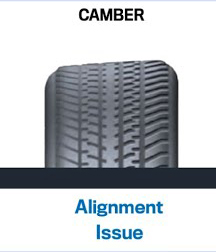
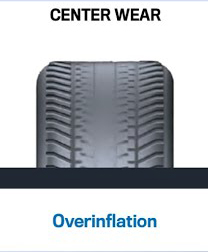
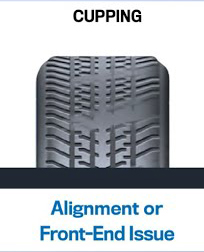
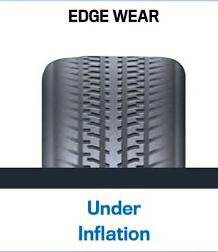
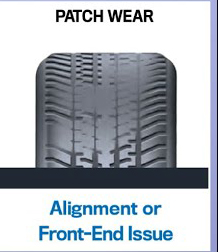
Inspecting Side Walls
Importance of regular side wall inspection
Regular sidewall tire inspection on an RV is essential for maintaining overall tire health and ensuring safe travels. The sidewalls of a tire play a crucial role in supporting the vehicle’s weight and maintaining structural integrity. They are susceptible to various factors such as UV exposure, weathering, and road hazards that can lead to cracks, bulges, or other forms of damage.
Periodically checking the sidewalls for any signs of wear or deformities is essential in identifying potential issues before they escalate. Damaged sidewalls can compromise the tire’s ability to perform optimally, increasing the risk of blowouts and other safety hazards.
Routine inspections also enable early detection of issues, allowing for timely tire replacement or repairs. RV owners should pay particular attention to the sidewalls during regular RV tire maintenance checks or before embarking on long journeys, ensuring a safer and more reliable travel experience.
Signs of sidewall damage and what to do

While a consumer can perform a visual and tactile check, a qualified technician possesses the expertise and tools to conduct a more thorough examination, including using specialized equipment to assess the tire’s internal condition. Regularly scheduled professional inspections are crucial for identifying potential sidewall damage early on, ensuring optimal tire performance and enhancing overall safety on the road.
Protecting Tires from UV Damage
The role of UV rays in tire deterioration
UV rays from the sun can significantly impact the lifespan and performance of RV tires. Continuous exposure to sunlight causes the rubber compounds in the tires to break down and deteriorate over time. This process, known as photodegradation, can lead to various issues, such as cracking, dry rot, and loss of flexibility. UV rays accelerate the tire’s aging process, making it more prone to failure.
In addition to UV rays, other environmental factors can contribute to the degradation of RV tires. Ozone, which is present in the air, can react with the rubber compounds and lead to cracking. Heat is another factor, as excessive temperatures can accelerate the chemical reactions that cause the rubber to break down. Prolonged periods of inactivity or storage, especially in areas with extreme temperatures, can also contribute to tire deterioration.
RV owners should take preventive measures to mitigate the impact of UV rays and other environmental factors. Storing the RV in a shaded area or using tire covers when the vehicle is not in use can protect against UV exposure. Regular inspections of the tires for signs of damage, including cracks and bulges, are essential. Additionally, maintaining proper tire pressure and ensuring even weight distribution on the RV can help extend the life of the tires.
Recommended tire coverings to block UV exposure
Investing in high-quality tire coverings is crucial for safeguarding your vehicle’s tires against the harmful effects of UV exposure. These coverings act as a protective shield, preventing ultraviolet rays from deteriorating the rubber compounds in your tires.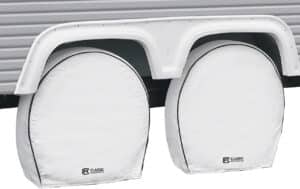
By choosing tire coverings designed to block UV rays, you not only enhance the aesthetic appeal of your vehicle but also contribute to the longevity and performance of your tires. Look for covers with UV-resistant materials and a secure fit to ensure comprehensive protection, ultimately saving you from the inconvenience and expense of premature tire wear and replacements.
Understanding DOT Date
Significance of the DOT date code on tires
The DOT (Department of Transportation) date code on RV (Recreational Vehicle) tires indicates the manufacturing date. This alphanumeric code is typically located on the sidewall and consists of letters and numbers. The last four digits of this code represent the week and year of manufacture. For example, a DOT code ending in “3018” would mean the tire was manufactured in the 30th week of 2018.
Understanding the significance of the DOT date code is essential for RV owners because it provides valuable information about the tire’s age. Tires age even when not in use, and the rubber compounds can deteriorate over time, especially in harsh conditions such as exposure to sunlight, temperature variations, and long periods of inactivity. As a general guideline, experts recommend replacing six-year-old tires or older, regardless of the remaining tread depth. This proactive approach helps ensure the safety and reliability of your RV tires, reducing the risk of blowouts or other tire-related issues while on the road. See further RV tire maintenance at the Goodyear website.
Tip: Please always check the DOT date code when you purchase new tires. Make sure you purchase tires that were manufactured the same year you purchased them.
Tip: In a maintenance book, write down each tire's DOT date and the 6th year past the DOT date year. This way you will know the absolute year your tires will need changing. This helps with budgeting for those with tight budgets.
Tire Rotation
Benefits of regular tire rotation
Regular tire rotation is a critical RV tire maintenance practice for RVs, offering several benefits that contribute to the overall safety, performance, and longevity of the tires:
- Even Tread Wear: RVs often have a heavy load, and the weight distribution may vary across axles. Regular tire rotation helps achieve more uniform tread wear on all tires. This even wear ensures better traction, handling, and braking performance, promoting overall safety on the road.
- Extended Tire Life: Uneven wear patterns can significantly reduce the lifespan of tires. By rotating the tires at regular intervals, you distribute the wear more evenly, helping each tire to endure the stresses of driving and load-bearing more consistently. This, in turn, extends the overall life of the entire set of tires.
- Improved Fuel Efficiency: Even tread wear not only enhances safety but also contributes to improved fuel efficiency. Tires with even wear patterns reduce rolling resistance, making the RV more fuel-efficient and potentially saving fuel costs.
- Maintaining Proper Handling and Stability: Unevenly worn tires can lead to handling issues and reduced stability, particularly during turns or emergency maneuvers. Regular tire rotation helps maintain consistent handling characteristics, enhancing the overall stability and control of the RV.
- Prevention of Irregular Wear Issues: RVs may experience specific wear patterns based on factors like alignment, suspension setup, or driving conditions. Regular rotation allows for the early detection and correction of alignment issues, preventing irregular wear and addressing potential problems before they become serious.
- Optimized Performance: Tire rotation ensures that all tires contribute equally to the RV’s overall performance by promoting even wear and preventing irregularities. This is especially crucial for vehicles that may be subjected to extended periods of storage, as it helps prevent flat spots and deterioration.
To maximize the benefits of tire rotation, following the manufacturer’s recommendations regarding the rotation pattern and frequency is essential. Regular RV tire maintenance, including rotation, contributes not only to the safety of your RV but also to cost savings by extending the life of your tires.
In conclusion, prioritizing regular RV tire maintenance for your tires is fundamental to ensuring both safety and optimal performance during your travels. By adhering to a comprehensive routine that includes visual inspections, proper inflation, regular tire rotations, and load distribution awareness, you contribute significantly to the longevity of your tires and, consequently, the overall well-being of your RV.
Remember, these guidelines serve as a general roadmap, and the specific needs of your RV may vary. Please always consult your RV’s manufacturer specifications and follow any RV tire maintenance guidelines provided here. The manufacturer’s insights are invaluable, considering they are tailored to the unique characteristics of your RV, offering a more personalized approach to tire care. Combining your diligence with the manufacturer’s expertise, you embark on your RV life with tires that meet safety standards and enhance your RV adventures’ overall enjoyment and reliability.
Is Maintenance Just Not Possible Anymore?
We are here to help! If you want to spend more time working on your hobbies instead of RV awning maintenance, it’s time to give us a call. Let En Route RV Services take care of your RV maintenance while you sit back and enjoy your favorite beverage or make a hole-in-one on the back nine.

